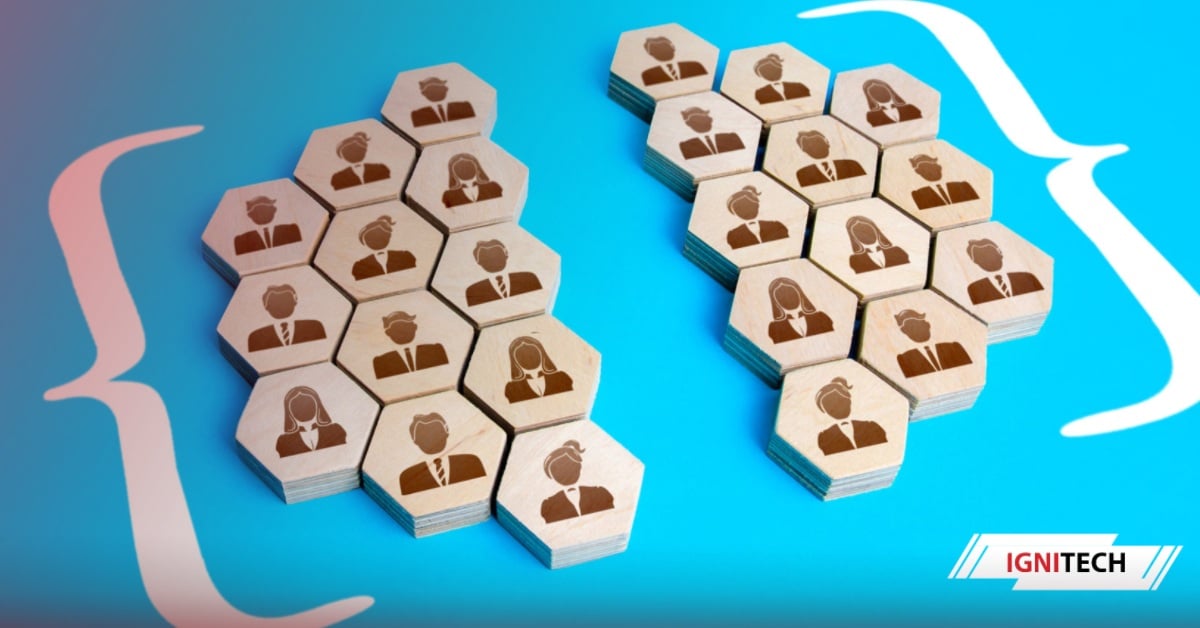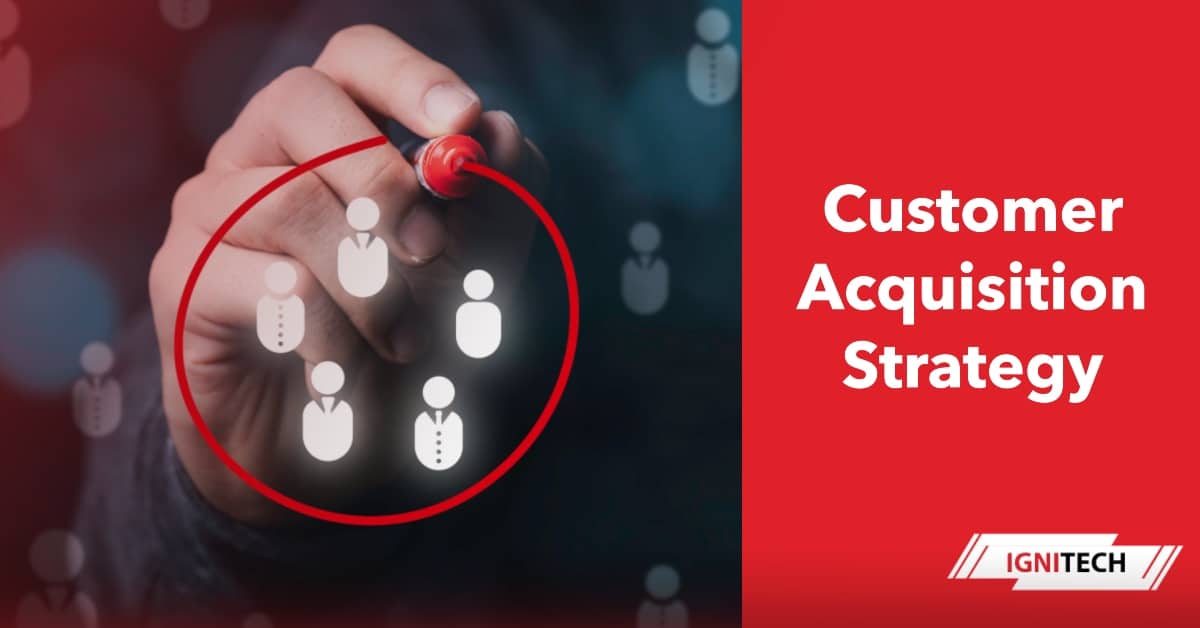Getting new customers is crucial for any business to survive and thrive. An effective customer acquisition strategy can help exponentially grow your client base and revenue. This comprehensive guide covers what an acquisition strategy is, how to plan and model customer acquisition, the three parts of the customer lifecycle, and outlines the 7 most powerful steps for acquiring new customers. Follow these proven tactics to boost growth.
What is a Customer Acquisition Strategy?

A customer acquisition strategy is a documented plan of action focused on attracting new customers to purchase your products or services. It involves selecting and optimizing targeted marketing channels to reach potential high-value customers, convert them into paying clients, and ultimately retain them for repeat business and referrals.
An effective strategy sets goals for customer growth, identifies best-fit customer profiles, allocates sufficient budget across acquisition activities, and tracks critical metrics to monitor progress. This drives growth in a strategic, efficient manner.
How to Plan Customer Acquisition strategy
Proper planning is key to executing a winning customer acquisition approach. Follow these best practices:
Set Specific Goals
Define concrete targets for your strategy based on business objectives, such as gaining 20 new customers per month or increasing sales by 15% this quarter. Ensure they are measurable and achievable.
Profile Your Ideal Customer
Create detailed buyer personas that capture your best-fit target customers. Outline their demographics, challenges, motivations and media habits to determine how to best reach them.
Audit Your Funnel Performance
Assess metrics for each acquisition channel to see current conversion and retention rates. Identify strong and weak areas of the funnel to optimize.
Build a Targeted Budget
Allocate sufficient marketing budget and resources towards high-potential customer acquisition opportunities while balancing costs.
How to Model Customer Acquisition
Analytics models help project the return from investing in customer acquisition and inform budget allocation. Two important models are:
Customer Lifetime Value (CLV)
This estimates total lifetime value of an average new customer which allows you to set acquisition cost thresholds.
Customer Acquisition Cost (CAC)
Calculating cost to acquire each new customer helps determine the acquisition channels and campaigns providing the best return.
Comparing CLV to CAC reveals how profitable your strategy is. CLV should exceed CAC for long-term growth.
The 3 Parts of the Customer Acquisition Cycle
There are three interconnected components your acquisition program should drive:
1. Reach
Focus advertising, content marketing and referrals on maximizing brand awareness and reaching your buyer personas where they spend time online.
2. Acquire
Craft targeted landing pages, offers and promotions to convert high-quality website traffic into free trials or paying customers.
3. Retain
Optimize the onboarding process, feature adoption and customer satisfaction to retain newly acquired customers for repeat purchases.
Now let’s explore the step-by-step process for planning an effective customer acquisition strategy.
The 7 Steps to Building Your Customer Acquisition Strategy

Follow these powerful, proven steps to develop an integrated acquisition strategy to profitably scale your customer base:
Step 1: Set Goals and Budget
Begin by defining specific numeric goals for new customer growth this quarter or year based on business objectives. Use historic retention rates to calculate projections. Also finalize the total acquisition budget and allocation across planned initiatives.
Step 2: Specify Buyer Personas
Leverage existing customer data and market research to build detailed profiles for your prime target customer segments. Outline their behaviors, pains, and motivations plus where they spend time online. Supplement with demographic info and techography details.
Step 3: Audit Your Sales Funnel
Thoroughly assess performance metrics for each stage of your current sales funnel to diagnose which parts of the cycle need improvement to boost conversions. Identify any channel gaps.
Step 4: Map the Buyer’s Journey
Visually outline the typical touchpoints, interactions, and journey a new prospective customer takes from initial brand awareness through the final win-back and loyalty stages.
Step 5: Identify Prospects
Use the buyer personas and purchase triggers uncovered to pinpoint where your aspirational customers spend time digitally such as search, social media forums and influential blogs. Target these channels.
Step 6: Convert Prospects into Customers
Craft compelling offers, promotions and free trials targeted to your high-value prospects. Welcome new customers onboard optimally to drive initial conversions.
Step 7: Retain and Win-Back Lost Customers
Focus on delighting new customers to maintain retention rates. For customers at risk of churning, promptly win them back using tailored incentives and offers. Also incentivize referrals.
Driving More Traffic to Reach New Prospects
While having compelling offers helps convert visitors, you first need to drive targeted traffic to your site and content. Here are proven tactics to get found by ideal prospects:
Optimize for Organic Search
Make SEO central to acquisition by researching buyer keywords and ensuring pages rank well organically for related terms. Produce blog and video content explaining top challenges for your personas and highlighting your solutions. Prioritize backlink building to boost authority.
Run Pay-Per-Click Ads
Allocate part of your budget towards paid search and display ads personalized towards different personas using demographic and interest data. Continuously A/B test ad variants and landing pages.
Leverage Social Media Amplification
Research relevant niche hashtags and engaged influencers. Participate actively in conversations on priority networks used by target buyers. Develop shareworthy content and run lead gen promotions.
Syndicate and Promote Content
Get added visibility and backlinks by having leadership contribute guest articles to industry publications read by your ideal customers. Repurpose and share content across channels.
Foster Word-of-Mouth Buzz
Encouraging referrals via promotions is invaluable for acquisition. Also actively pursue customer reviews, testimonials and referencability to organically spread awareness.
By driving highly qualified traffic to your brand across channels, you set the stage for higher prospect-to-customer conversion rates.
Building an Effective Acquisition Team
While much customer acquisition activity can be self-serve today with automation, having a dedicated acquisition team with specialized roles and clear responsibilities helps scale efforts exponentially.
Typical roles needed include:
- Acquisition Manager – Leads strategy, execution and budget allocation
- Content Marketer – Produces personalized content for stages
- Paid Ads Specialist – Manages and optimizes all paid campaigns
- Sales Development Rep (SDR) – Qualifies and converts promising inbound leads
- Sales Closer – Closes sales with qualified prospects
- Customer Success Manager – Manages onboarding and retention
With each member equipped with target metrics and executing integrated campaigns across the funnel, your cost per acquisition will reduce significantly along with growth acceleration.
Tracking Performance with Key Acquisition Metrics
There are four overarching customer acquisition metrics that indicate how effectively your strategy is working:
1. Visitor to Lead Conversion Rate What portion of your website visitors continue to become leads by opting into offers and content.
2. Lead to Customer Conversion Rate The percentage of leads acquired that turn into paying customers.
3. Average Acquisition Cost Per Customer This indicates what you invest on average to land each new customer.
4. Lifetime Value Per Customer Forecasts the total revenue per acquired customer accounting for expansion and retention.
Monitoring the trends in these metrics informs everything from budget decisions to funnel optimization. Acquiring higher lifetime value customers cost effectively ensures growth.
Common Pitfalls to Avoid with Acquisition Strategies
While effective customer acquisition can rapidly scale a business, there are a few common missteps that hinder success:
Not Linking Efforts to Revenue Goals Activities should ultimately ladder up to quarterly sales targets. Ensure marketing and sales teams have shared incentive around contribution.
Focusing on Quick Wins Rather Than Lifetime Value
Avoid overly pricey tactics providing short-term gains but lower long-term value. Account for full profit potential of target personas.
Putting Brand Awareness Ahead of ROI Perfect brand recall is pointless unless it drives measurable sales pipeline velocity and conversion gains.
Chasing Every Low Quality Lead
qualifying leads prematurely wastes sales cycles. Develop ideal customer criteria and target outreach accordingly for efficiency.
Neglecting Existing Customers
Acquiring new customers is more expensive than growing existing ones. Continue nurturing current relationships amidst acquisition pushes.
Best Practices for Ongoing Optimization

To continually enhance performance of your acquisition strategy, incorporate these optimization habits:
Review Analytics Frequently
Import web, digital ads, social media, referral and sales metrics into your CRM. Establish reporting rhythms to spot trends early.
Track Comprehensive Attribution
See true influence driving conversions by capturing first touch, assisted conversions and indirect events leading to pipeline development.
Update Content and Offers Regularly
Consistently produce fresh personalized content and irresistible offers matched to shifting priorities of target personas.
Nurture Prospects Over Time
Not everyone converts initially. Follow up and continue educating through helpful content to win customers when ready.
Interview Lost Prospects
Understand why promising leads did not convert by soliciting candid first-party feedback about their experience.
What is an example of an acquisition strategy?
1. Business Acquisitions: In this context, an acquisition strategy is a roadmap for a company to buy another company or its assets. It outlines the goals of the acquisition, the target companies, the methods of approach, and the integration plan. Here are a few examples:
- Market Expansion: A large food company might acquire a smaller, regional organic food producer to expand its market share and product portfolio.
- Technology Acquisition: A software company might acquire a startup with cutting-edge AI technology to enhance its existing offerings and stay ahead of the competition.
- Cost Synergies: A manufacturing company might acquire a supplier to gain control over production costs and improve efficiency.
2. Customer Acquisition: In this context, an acquisition strategy focuses on attracting and converting new customers for a product or service. Here are a few examples:
- Content Marketing: Creating valuable content like blog posts, infographics, and videos to attract potential customers through organic search and social media.
- Referral Programs: Encouraging existing customers to refer their friends and family through incentives like discounts or rewards.
- Free Trials/Freemium Models: Offering a limited version of the product for free to let users experience its value before committing to a paid plan.
To give you a more specific example, let’s say you’re a small e-commerce store selling handmade jewelry. Your customer acquisition strategy might involve:
- Targeted social media advertising: Running ads on platforms like Instagram and Facebook to reach people interested in handmade crafts.
- Collaborations with influencers: Partnering with jewelry bloggers or fashion influencers to promote your products to their audience.
- SEO optimization: Making sure your website and product pages rank high in search engine results for relevant keywords.
Ultimately, the best acquisition strategy will depend on your specific goals, target audience, and resources. It’s important to carefully consider all the options and create a plan that’s tailored to your unique situation.
B2B Customer Acquisition Strategy
While many of the core principles of customer acquisition apply to both B2C and B2B businesses, there are some key differences when acquiring customers in a B2B context:
Target Account Lists Rather than going after a broad consumer audience, B2B companies must identify specific accounts (companies) that match their ideal customer profile and have a genuine need for their product or service. Building target account lists and gathering intelligence on these accounts is crucial.
Account-Based Marketing Account-based marketing (ABM) is a focused strategy where marketing and sales teams join forces to engage specific high-value accounts with personalized campaigns and messaging across multiple channels – from advertising to email to direct outreach.
Thought Leadership Content B2B buyers rely heavily on educational content like white papers, case studies, analyst reports and webinars when researching solutions. Creating authoritative thought leadership content that establishes expertise is vital for driving awareness and preference.
Event Marketing Attending and sponsoring relevant industry conferences and events is an effective way to get face time with prospective customers and build pipeline through networking.
Nurturing Buyer Committees B2B purchases typically involve multiple decision makers and influencers within an account. Nurturing these buying committees with the right content and conversations targeted to their roles and objections is key.
Strategic Partnership Ecosystems Partnering with other complementary technology vendors or service providers can unlock new co-marketing opportunities to expand reach into each other’s customer bases.
Key Takeaways about Customer Acquisition Strategy:
Planning:
- Set specific goals: Define measurable targets for customer growth based on business objectives.
- Profile your ideal customer: Create detailed buyer personas to understand their needs and preferences.
- Audit your acquisition funnel: Analyze performance metrics for each stage to identify areas for improvement.
- Build a targeted budget: Allocate resources towards promising customer acquisition opportunities.
Modeling:
- Customer Lifetime Value (CLV): Estimate the total lifetime revenue from a new customer to determine acquisition cost thresholds.
- Customer Acquisition Cost (CAC): Calculate the cost to acquire each new customer to compare against CLV and assess profitability.
Cycle:
- Reach: Maximize brand awareness through advertising, content marketing, and referrals.
- Acquire: Convert website traffic into paying customers with targeted offers and landing pages.
- Retain: Optimize onboarding and customer experience to drive repeat purchases and prevent churn.
Steps:
- Set Goals & Budget: Define numeric goals and allocate funds for acquisition initiatives.
- Specify Buyer Personas: Build detailed profiles of your ideal customer segments.
- Audit Sales Funnel: Analyze performance metrics for each stage to identify bottlenecks.
- Map Buyer’s Journey: Visualize the touchpoints and interactions a new customer takes.
- Identify Prospects: Pinpoint where your target audience spends time online.
- Convert Prospects: Craft compelling offers to convert high-value prospects into customers.
- Retain & Win-Back: Focus on delighting new customers and re-engage those at risk of churn.
Driving Traffic:
- SEO: Optimize content for organic search and target relevant buyer keywords.
- Pay-Per-Click Ads: Run targeted ads on search engines and display networks.
- Social Media: Participate in relevant conversations and amplify content on key platforms.
- Content Syndication: Contribute guest articles to industry publications and share content across channels.
- Word-of-Mouth: Encourage referrals through promotions and positive customer experiences.
Building a Team:
- Acquisition Manager: Leads strategy, execution, and budget allocation.
- Content Marketer: Creates personalized content for different acquisition stages.
- Paid Ads Specialist: Manages and optimizes paid advertising campaigns.
- Sales Development Rep: Qualifies and converts inbound leads.
- Sales Closer: Closes deals with qualified prospects.
- Customer Success Manager: Manages onboarding and retention.
Tracking Performance:
- Visitor to Lead Conversion Rate: Measures how effectively website traffic converts into leads.
- Lead to Customer Conversion Rate: Tracks the percentage of leads that become paying customers.
- Average Acquisition Cost per Customer: Indicates the investment required to acquire each new customer.
- Lifetime Value per Customer: Forecasts the total revenue generated from an acquired customer.
Common Pitfalls:
- Not aligning efforts with revenue goals.
- Focusing on quick wins over lifetime value.
- Prioritizing brand awareness over ROI.
- Chasing low-quality leads.
- Neglecting existing customers.
Best Practices for Optimization:
- Review analytics frequently.
- Track comprehensive attribution.
- Update content and offers regularly.
- Nurture prospects over time.
- Interview lost prospects.
FAQs
Inbound marketing, outbound sales, partnerships, and referrals. Using a mix creates a robust client acquisition strategy.
A digital agency targets product companies selling to mid-market B2B buyers. They use account-based marketing, consultative sales, industry content partnerships, and conversion tools tailored to prove ROI.
Define your ideal client, map their journey to becoming a customer, assess your offerings, identify discovery channels, build conversion experiences, focus on retention, analyze/optimize.
Create detailed ideal client profiles then ensure your messaging, content, and outreach directly speaks to their biggest needs and pain points better than alternatives.
Key indicators are lower customer acquisition costs, higher sales qualified lead conversion rates, shorter sales cycles, more deal sizes within target ranges, and low client churn.
Typically plan to spend around 10-20% of revenue on sales and marketing expenses. Within that, dedicate at least 50% on targeted client acquisition activities.
Formally review every 6 months. But continually track weekly/monthly conversion, churn, and cost metrics to identify areas needing optimization in real-time.
The highest-converting acquisition channels are typically organic search, paid search, targeted social media and display ads, word-of-mouth referrals, niche authority sites and email nurture campaigns.
Sum up all sales, marketing and onboarding expenses invested to acquire new customers then divide that total cost by the number of new customers gained this period.
CRMs, marketing automation platforms, customer intelligence systems, and cost calculators assist with managing workflows, analytics and projections for your strategy.
Improving onboarding, optimizing product adoption with in-app guidance, providing educational content for customers to self-serve, and proactively delighting with value-adds increase retention.
 Anas is our go-to copywriter with a knack for crafting persuasive and high-converting eCommerce landing pages. His passion for words and understanding of consumer psychology helps turn visitors into loyal customers. When he's not refining his copy, Anas enjoys exploring the latest digital marketing trends and experimenting with new writing techniques. His blend of creativity and strategic thinking makes him an indispensable part of our energetic team.
Anas is our go-to copywriter with a knack for crafting persuasive and high-converting eCommerce landing pages. His passion for words and understanding of consumer psychology helps turn visitors into loyal customers. When he's not refining his copy, Anas enjoys exploring the latest digital marketing trends and experimenting with new writing techniques. His blend of creativity and strategic thinking makes him an indispensable part of our energetic team.












